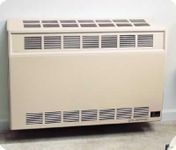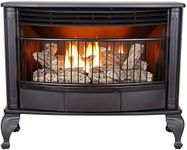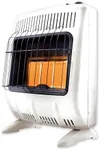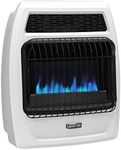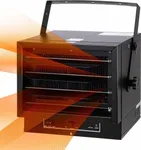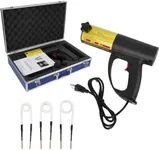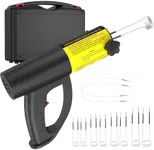Buying Guide for the Best Propane Wall Heaters
Choosing the right propane wall heater can make a significant difference in your home's comfort and energy efficiency. Propane wall heaters are a great option for providing consistent and efficient heat, especially in areas where electricity may be unreliable or expensive. When selecting a propane wall heater, it's important to consider several key specifications to ensure you get the best fit for your needs. Understanding these specifications will help you make an informed decision and find a heater that meets your heating requirements and preferences.BTU RatingBTU (British Thermal Unit) rating measures the heater's heat output. This spec is crucial because it determines how much space the heater can effectively warm. Lower BTU ratings (5,000-10,000 BTUs) are suitable for small rooms or spaces, while higher ratings (20,000-30,000 BTUs) are better for larger areas. To pick the right BTU rating, consider the size of the room you want to heat. A general rule of thumb is that you need about 20 BTUs per square foot of space.
Ventilation TypePropane wall heaters come in vented and vent-free models. Vented heaters expel combustion gases outside, making them safer and more suitable for continuous use in living spaces. Vent-free heaters are easier to install and more efficient since they don't lose heat through a vent, but they require good room ventilation to avoid indoor air quality issues. Choose vented heaters for bedrooms and living rooms, and vent-free models for well-ventilated areas like garages or workshops.
Thermostat ControlThermostat control allows you to set and maintain a desired temperature, providing consistent comfort and energy efficiency. Some heaters come with built-in thermostats, while others may require an external thermostat. If you want precise temperature control and convenience, look for models with an integrated thermostat. For basic heating needs, a manual control heater might suffice.
Ignition TypeIgnition type refers to how the heater is started. There are two main types: electronic ignition and pilot light. Electronic ignition is more convenient and energy-efficient, as it only uses gas when the heater is operating. Pilot light models have a small flame that burns continuously, which can be less efficient but may be more reliable in power outages. Choose electronic ignition for ease of use and efficiency, and pilot light if you need a reliable option during power interruptions.
Safety FeaturesSafety features are essential for any propane wall heater to ensure safe operation. Look for heaters with oxygen depletion sensors (ODS) that shut off the heater if oxygen levels drop too low, and overheat protection that turns off the heater if it gets too hot. These features are particularly important if you plan to use the heater in a bedroom or other enclosed space. Prioritize models with comprehensive safety features to protect your home and family.
Size and DesignThe size and design of the heater can affect both its performance and how well it fits into your space. Compact models are ideal for smaller rooms or areas with limited wall space, while larger units can provide more heat but may require more installation space. Additionally, consider the aesthetic design of the heater to ensure it complements your room's decor. Choose a size and design that balances heating capacity with your space and style preferences.



